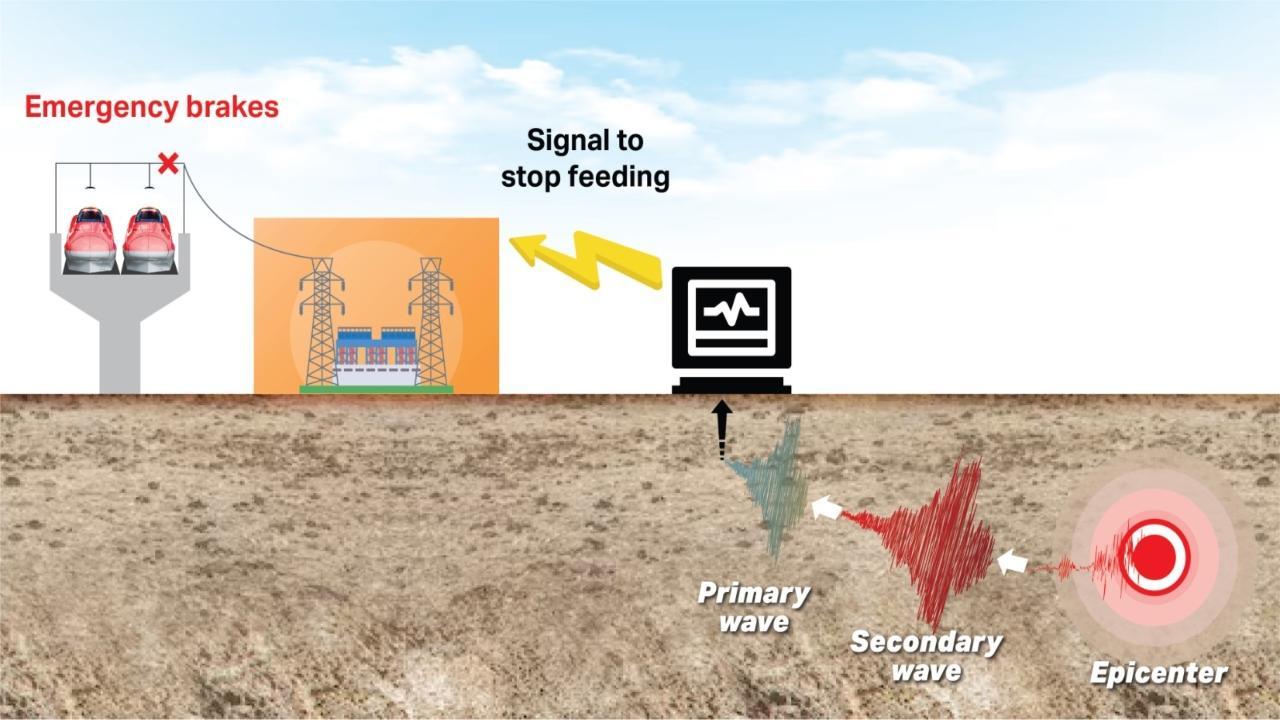The Mumbai-Ahmedabad High-Speed Rail Corridor, commonly known as the Bullet Train project, will install an Early Earthquake Detection System to ensure the safety of passengers and critical infrastructure during seismic events

In a first, seismometers to be installed on Mumbai-Ahmedabad bullet train for early detection of earthquakes
The Mumbai-Ahmedabad High-Speed Rail Corridor, commonly known as the Bullet Train project, will install an Early Earthquake Detection System to ensure the safety of passengers and critical infrastructure during seismic events.
The system, inspired by Japanese Shinkansen technology, will deploy 28 seismometers along the high-speed rail corridor, a statement said. These seismometers will play a crucial role in detecting earthquake-induced tremors through primary waves, facilitating an automatic power shutdown. In case of a power shutdown, emergency brakes will be activated, bringing trains to a halt in the affected area.
Out of the 28 seismometers, 22 will be strategically placed along the alignment of the Bullet Train project. Maharashtra will host eight of these devices in key locations such as Mumbai, Thane, Virar, and Boisar.
Meanwhile, Gujarat will have fourteen seismometers located in Vapi, Bilimora, Surat, Bharuch, Vadodara, Anand, Mahembadad, and Ahmedabad. The installation of seismometers will be primarily concentrated in Traction Sub-Stations and Switching Posts along the high-speed rail corridor.
In addition to these, six seismometers, termed as inland seismometers, will be strategically positioned in earthquake-prone areas. These locations include Khed, Ratnagiri, Latur, and Pangri in Maharashtra, along with Adesar and Old Bhuj in Gujarat. The selection of these sites followed a survey conducted by Japanese experts, taking into account the areas near the Mumbai-Ahmedabad High-Speed Rail alignment where earthquakes exceeding 5.5 magnitudes have occurred in the past century. The final decision was based on a comprehensive soil suitability study, including a micro tremor test.
This innovative Early Earthquake Detection System is poised to set new safety standards for high-speed rail travel in India, ensuring swift and automatic responses to seismic activities, thereby safeguarding the well-being of passengers and the integrity of critical infrastructure.
How do Earthquake Early Detection Systems work?
Earthquake early detection systems do not predict earthquakes; instead, they detect ground motion as soon as an earthquake initiates and rapidly issue alerts indicating an impending tremor. The concept of such systems was introduced by Caltech seismologist Tom Heaton in 1985. Notable systems like ShakeAlert on the West Coast of the United States operate based on the principle that electronic alerts can be transmitted almost instantly from the quake's epicenter, even though seismic waves travel at just a few miles per second. Here's the process:
When an earthquake occurs, faster P-waves, although weaker, trigger sensors that send signals to data processing centers.
Algorithms swiftly calculate the earthquake's location, magnitude, and intensity—answering questions like where it is, how big it is, and who will be affected.
The system issues an alert before slower but more destructive S-waves and surface waves reach the area.
While individuals near the epicenter receive little to no advance warning, those at a distance may have vital seconds to prepare for shaking. When coupled with automated responses such as slowing trains or shutting off gas lines, these early warning systems have the potential to mitigate injuries and damage commonly associated with major earthquakes. (With additional details from Science Exchange)
 Subscribe today by clicking the link and stay updated with the latest news!" Click here!
Subscribe today by clicking the link and stay updated with the latest news!" Click here!










